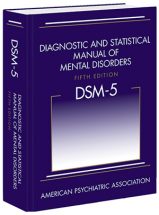Autism
Autism spectrum disorder (ASD) is a neurodevelopment disorder characterized by difficulties in communication, social interactions, and restricted and repetitive behaviors. The U.S. Centers for Disease Control and Prevention reported the prevalence of ASD to be 1 in 68 children in 2012. The first research regarding autism was published by Leo Kanner in 1943, since then it has been defined and classified in a number of different ways. It is now diagnosed based on the criteria found in the Diagnostic and Statistical Manual of Mental Disorders, 5th Edition (DSM-V). Diagnosis can occur and follows an initial screening from a primary care physician at around 18 to 24 months of age. The gold standard of diagnosis is considered to be observation and interview conducted by a trained clinician.
DSM-V Diagnostic Criteria Include:
Persistent deficits in social communication and social interaction across multiple contexts, as manifested by the following, currently or by history.
- Restricted, repetitive patterns of behavior, interests, or activities, as manifested by at least two of the following, currently or by history.
- Symptoms must be present in the early developmental period.
- Symptoms cause clinically significant impairment in social, occupational, or other important areas of current functioning.
- These disturbances are not better explained by intellectual disability (intellectual developmental disorder) or global developmental delay. Intellectual disability and autism spectrum disorder frequently co-occur; to make comorbid diagnoses of autism spectrum disorder and intellectual disability, social communication should be below that expected for general developmental level.
Treatment: We’re here to help!
Applied behavior analysis (ABA) based treatment methods for ASD have been approved and mandated to be covered by insurers in 43 out of 50 states. The principles of ABA started with the work of B.F. Skinner and the treatment of autism using these methods was made popular by Ivar Lovaas and his intensive ABA treatment methods following the publication of his 1987 study. The popularity of ABA treatments again seemed to rise following the publication of Catherine Maurice’s book titled Let Me Hear Your Voice.
How do I pick the right ABA program for my child?
The National Autism Center suggests that you look for a program that:
- Involves direct consultation by senior clinicians (doctoral-level or board certified professionals)
- Includes staff who can clearly describe the design and implementation of an intervention
- Integrates research findings with professional judgment and data-based clinical decision making, the values and preferences of families, and capacity to effectively implement interventions
- Addresses the comprehensive needs of individuals on the autism spectrum with sufficient intensity so children and adolescents can make meaningful progress

 Persistent deficits in social communication and social interaction across multiple contexts, as manifested by the following, currently or by history.
Persistent deficits in social communication and social interaction across multiple contexts, as manifested by the following, currently or by history.